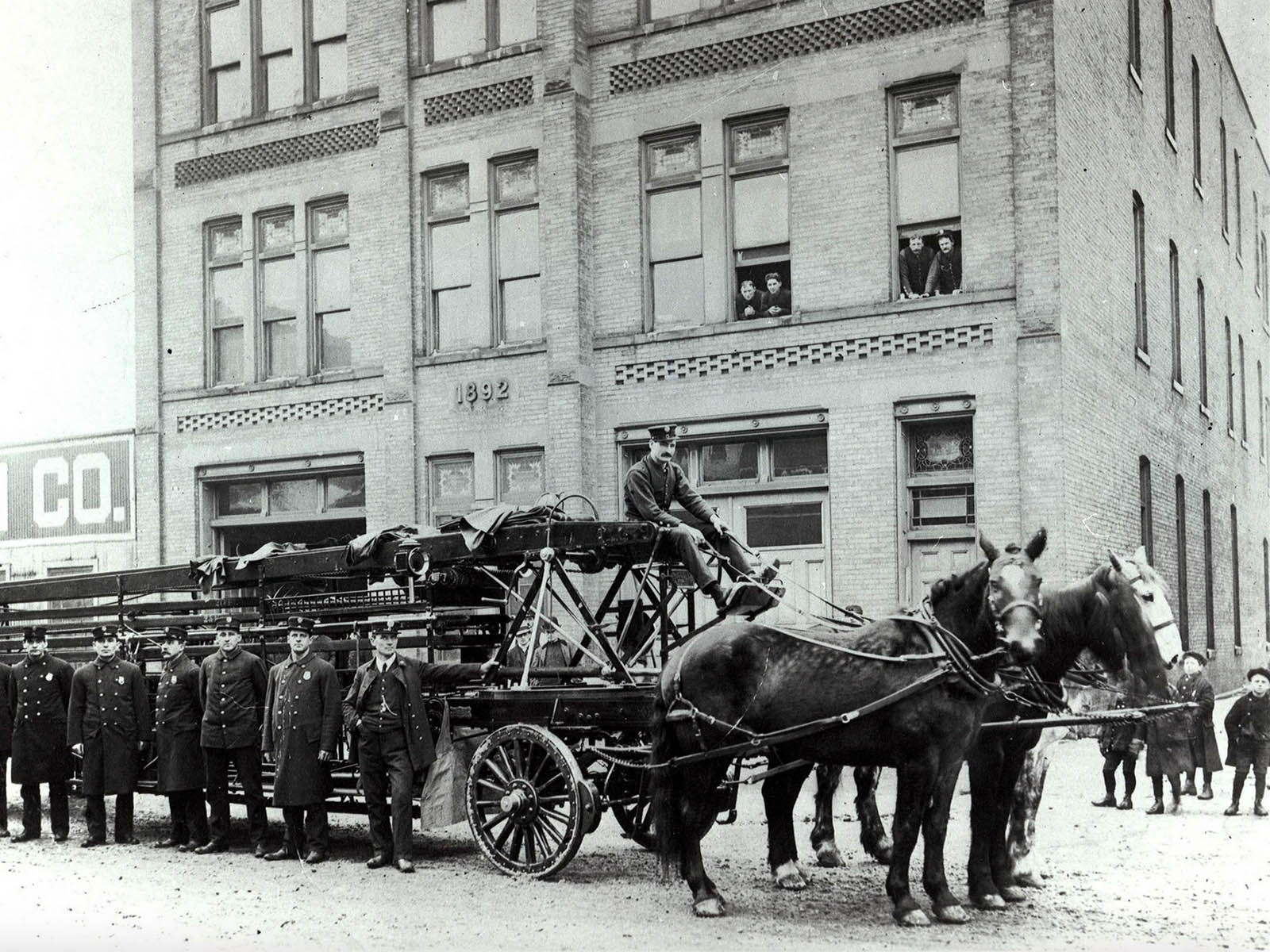
Ladder 13, organized in 1908 at Engine 2 quarters on North 4th Street. (PHOTO: Milwaukee Fire Department)
On January 1, 2025, the Milwaukee Fire Department (MFD) marked a monumental milestone—150 years of dedicated service to the city. From humble beginnings as a volunteer brigade to a modern, multifaceted emergency response organization, MFD’s journey reflects the evolution of firefighting itself and the resilience of a community shaped by fire and forged in progress.
Early Beginnings: Bucket Brigades and Volunteer Heroes
Milwaukee’s firefighting roots trace back to 1837, when volunteers formed the city’s first organized fire crew. Armed with wagons, buckets, and ladders, these early responders relied on donations and community support. Storekeepers and hotel managers often fed them during emergencies, and they were even called upon to quell civil disturbances. 🔗
By the late 1850s, the city had expanded its fire capabilities with hand-operated pumps pulled over cobblestone and dirt roads. These crews drew water from rivers and ponds, as hydrants didn’t yet exist. Fires were frequent and devastating, fueled by wooden structures and the absence of building codes. 🔗
Professionalization and Growth
In 1861, Milwaukee began formalizing its fire services, with part-time firefighters who held day jobs but remained on standby. The advent of steam engines required trained operators, setting the stage for a more professional force.
On January 1, 1875, MFD officially became a full-time, paid department. It started with 119 men, 10 horse-drawn steam engines, and two chemical engines. This marked the beginning of a new era in public safety. 🔗
Historic Fires That Shaped the Department
Two fires stand out in Milwaukee’s history:
- The Newhall House Hotel Fire (1883): The deadliest fire in city history, it claimed around 71 lives and burned for 26 hours after igniting in a wooden elevator shaft. 🔗
- The Third Ward Fire (1892): This massive blaze destroyed over 440 buildings across 20 blocks, leaving 2,500 people homeless. It prompted MFD to consider motorized vehicles to improve response times. 🔗
Technological Advancements and Innovations
Over the decades, MFD embraced innovations that revolutionized firefighting:
- Motorized Vehicles (1910s): Replacing horse-drawn engines, these vehicles improved speed and efficiency. 🔗
- Breathing Apparatus: Perhaps the most transformative tool, respirators allowed firefighters to enter burning buildings safely, protecting them from toxic fumes. 🔗
- Emergency Medical Services (EMS): Introduced in the 1970s, EMS shifted the department’s focus. Today, 85% of calls are medical in nature, and all firefighters are trained EMTs or paramedics. 🔗
Breaking Barriers and Building Diversity
In 1983, Debra Pross became the first woman to pass MFD’s firefighter training, following a federal court order to diversify the force. Today, over 100 women serve across nearly all ranks. 🔗
Preserving History and Celebrating Legacy
The Milwaukee Fire Historical Society and Museum, housed in a former firehouse at 1615 West Oklahoma Avenue, showcases the department’s rich history. From leather buckets to custom-built fire apparatus, the museum honors the bravery and ingenuity of generations of firefighters. 🔗
Retired Deputy Chief Jim Ley and Battalion Chief Dan Rode have been instrumental in preserving this legacy. Their efforts include a 150th anniversary yearbook and curated exhibits that connect past and present. 🔗
A Community Celebration
To commemorate its 150th anniversary, MFD hosted a public celebration at Henry Maier Festival Park on September 13, 2025. The event featured antique and modern fire apparatus, safety education, live music, and food—highlighting the department’s enduring bond with the community. 🔗
Looking Ahead
From its origins in volunteerism to its current role as a technologically advanced emergency response force, the Milwaukee Fire Department stands as a testament to courage, innovation, and public service. As it enters its next chapter, MFD continues to honor its past while embracing the future—ready to protect, serve, and inspire for generations to come.
History Highlights

William Hayden (8-19-1946) Milwaukee Fire Historical Society & Fire Museum for providing this image and list of historic moments.

8-18-1988 – Milwaukee Fire Historical Society & Fire Museum for providing this image and list of historic moments.
August 18, 2018: A 2nd alarm fire occurred at the Family Dollar Store located at 2601 W. Hampton Avenue.

Paul Beck (8-17-1987, BC Dick Kovatch & HEO Pat Gill)

Paul Beck (8-16-1994)

8-15-1933 Grain Elevator S. WaterSt. Learman & Eidman on ladder. Our Engineer Al Schunk of E-4 in laying out, passed several hydrants laying out 18 sections of hose. We think he was afraid of the building falling down. – Milwaukee Fire Historical Society & Fire Museum
August 15, 1910: A 3rd alarm fire occurred at Park & Muskego at the vacant Cream City Smelting Co.
August 15, 1933: A 3rd alarm fire occurred at Oregon & Water Streets at the Donahue Stratton Co.
August 15, 1966: A 2nd alarm fire occurred at 400-04 W. Juneau Street in a vacant mercantile building.
August 15, 1976: A 2nd alarm fire occurred at 425-27 W. National Avenue in a 4-story office and apartment building.
August 15, 1981: Engine 22, Ladder 19, Squad 3 and Med 4 responded to a 4-alarm fire in the City of Wauwatosa at Alioto’s Restaurant where two Wauwatosa Firefighters lost their lives.
August 15, 1989: A 2nd alarm fire occurred at 2010 N. 24th Street in a vacant building.
August 15, 1995: A 2nd alarm fire occurred at 5920-22 N. 63rd Street in an apartment building.
August 15, 2006: A 2nd alarm fire occurred at 8924 W. Mill Road in an apartment building.
